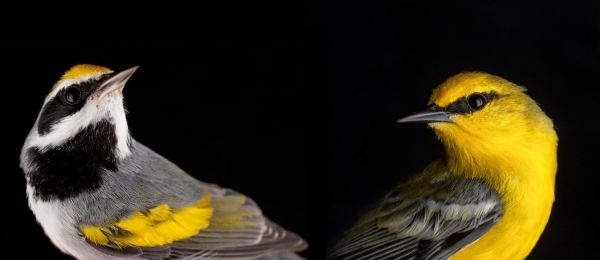A gene newly associated with the migratory patterns of golden-winged and blue-winged warblers could lend insight into the longstanding question of how birds migrate across such long distances. A new study led by researchers at the University of Colorado Boulder, Penn State, the Cornell Lab of Ornithology and the University of Toledo is the first to combine whole genome sequencing and migration tracking technology to pinpoint a single gene associated with the complex suite of traits that determine migratory behavior.
These findings may have important conservation implications for the declining populations of golden-winged warblers. The paper appears online in the journal Proceedings of the National Academy of Sciences and describes the gene, which is associated with a neurological disorder in humans.
“It was exciting and surprising to find a single gene associated with overwintering location,” said Scott Taylor, an assistant professor in CU Boulder's Department of Ecology and Evolutionary Biology (EBIO). “The extensive hybridization that we previously documented in this system makes it particularly useful for exploring genotype-phenotype associations.”
“The great migrations of the world have been inspiring people for hundreds of years,” said David Toews, assistant professor of biology at Penn State and leader of the research team. “The migration of birds is particularly fascinating because small species primarily navigate alone, at night, and at high altitudes, so people do not always see it happening. They are in your backyard, and then they are gone.”
Continue reading at University of Colorado - Boulder.
Image via University of Colorado - Boulder.


